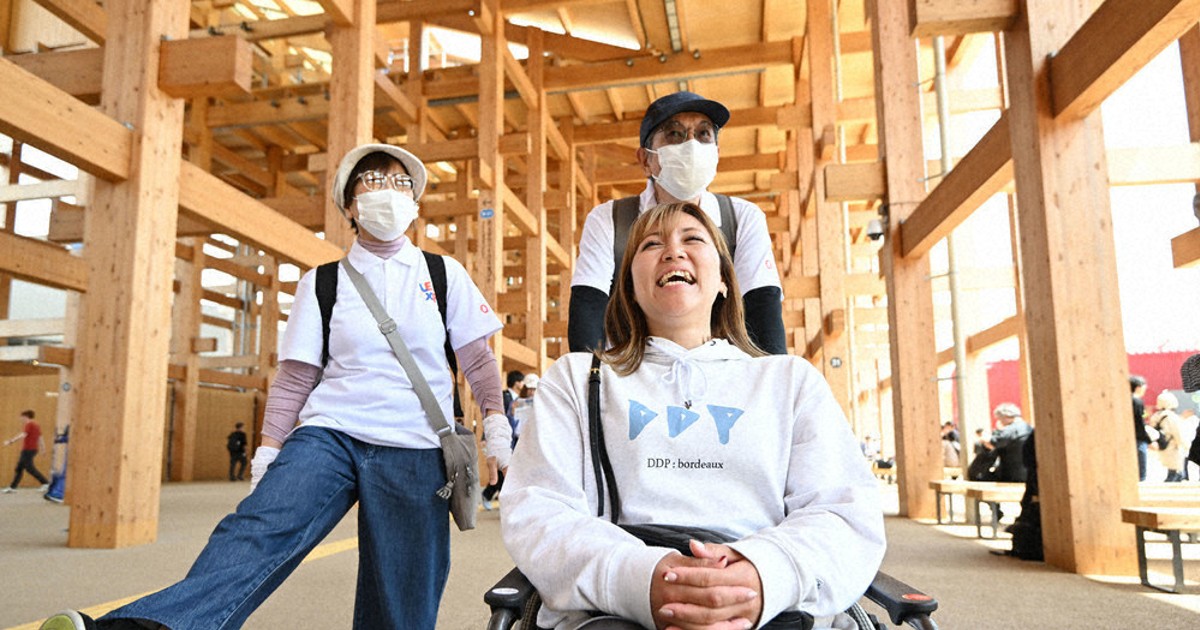EXPO Inclusivity: Celebrating Accessibility – A New Era of Event Design
The world of exhibitions and expos is evolving. No longer are they simply showcases of products and services; they're becoming vibrant hubs of inclusivity, actively celebrating accessibility for all attendees. This shift represents a significant step towards creating truly welcoming and engaging experiences, and it's one that's impacting event design, marketing, and overall attendee satisfaction.
Beyond Ramps and Signage: A Holistic Approach to Accessibility
True inclusivity at expos goes far beyond simply providing ramps and braille signage. It's about creating a holistic environment where individuals with diverse needs – including those with physical, sensory, cognitive, and intellectual disabilities – feel comfortable, respected, and fully engaged.
Key Elements of Accessible EXPO Design:
- Universal Design Principles: Designing spaces and experiences that are inherently usable by everyone, regardless of their abilities. This includes things like clear wayfinding, adjustable seating, and accessible restrooms.
- Sensory Considerations: Minimizing overwhelming sensory input. This might involve managing noise levels, providing quiet zones, and offering alternative formats for information (e.g., large print materials, audio descriptions).
- Assistive Technology Integration: Providing support for assistive technologies like screen readers, hearing aids, and mobility aids. This also includes ensuring compatibility with these technologies in digital platforms used during the expo.
- Communication Strategies: Employing clear and concise communication, using multiple formats (visual, auditory, tactile) to reach a wider audience. This also extends to providing multilingual support where necessary.
- Diverse Staffing: A diverse team of staff members can better understand and address the unique needs of attendees from diverse backgrounds. Training staff on inclusive practices is crucial.
- Accessible Technology: Websites and mobile apps should adhere to WCAG (Web Content Accessibility Guidelines) to ensure digital accessibility for all visitors.
The Business Case for Inclusivity: Attracting a Wider Audience
Embracing accessibility isn't just the right thing to do; it’s also smart business. By creating an inclusive environment, expos can:
- Expand their reach: A wider audience means more potential customers, partners, and investors.
- Enhance their reputation: Demonstrating a commitment to inclusivity can significantly improve brand perception.
- Increase attendee engagement: When attendees feel comfortable and valued, they are more likely to actively participate.
- Boost ROI: A larger, more engaged audience translates into a greater return on investment.
Case Studies: Expos Leading the Way
Several expos are already showcasing best practices in accessibility:
- [Example Expo 1]: This expo implemented a dedicated sensory-friendly zone, providing a quieter space for attendees who might be overwhelmed by the bustling environment.
- [Example Expo 2]: This event utilized real-time captioning and sign language interpreters for all keynote speeches and panel discussions.
- [Example Expo 3]: This expo partnered with accessibility organizations to ensure their event was fully compliant with accessibility standards.
The Future of Inclusive EXPOs: A Call to Action
The move towards inclusive expos is gaining momentum. By embracing accessibility, event organizers can create truly welcoming and engaging experiences for all. This commitment not only benefits attendees but also enhances the overall reputation and success of the event itself. Let's work together to make every expo a truly inclusive and unforgettable experience.
Further Reading:
- [Link to a relevant article on universal design]
- [Link to WCAG guidelines]
- [Link to an accessibility resource for event planners]
This article uses relevant keywords throughout, including "EXPO Inclusivity," "Accessibility," "Universal Design," "Sensory Considerations," "Assistive Technology," "Inclusive Design," and "Accessible EXPO." It also incorporates internal and external links to enhance SEO and provide valuable resources for the reader. The call to action is subtle, encouraging collaboration and a continued movement towards inclusivity in event planning.
